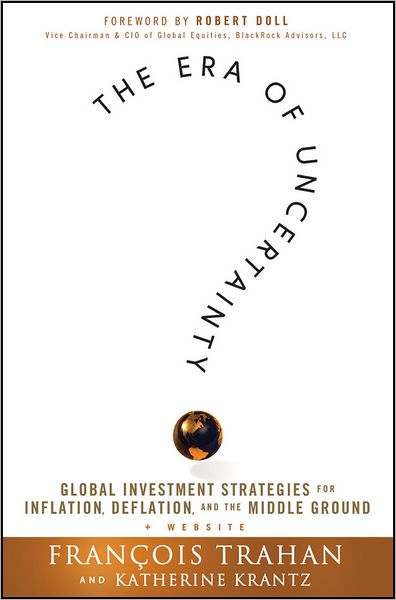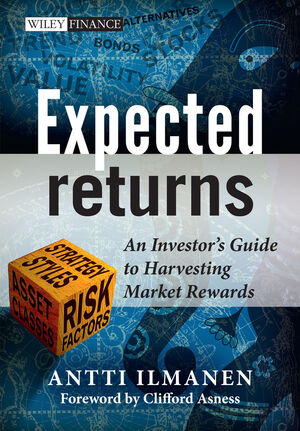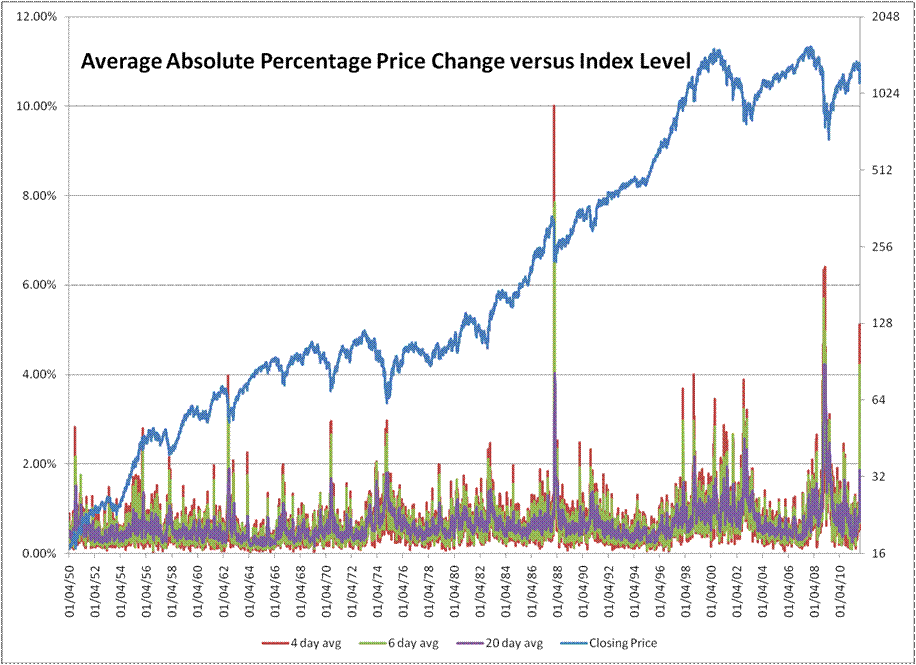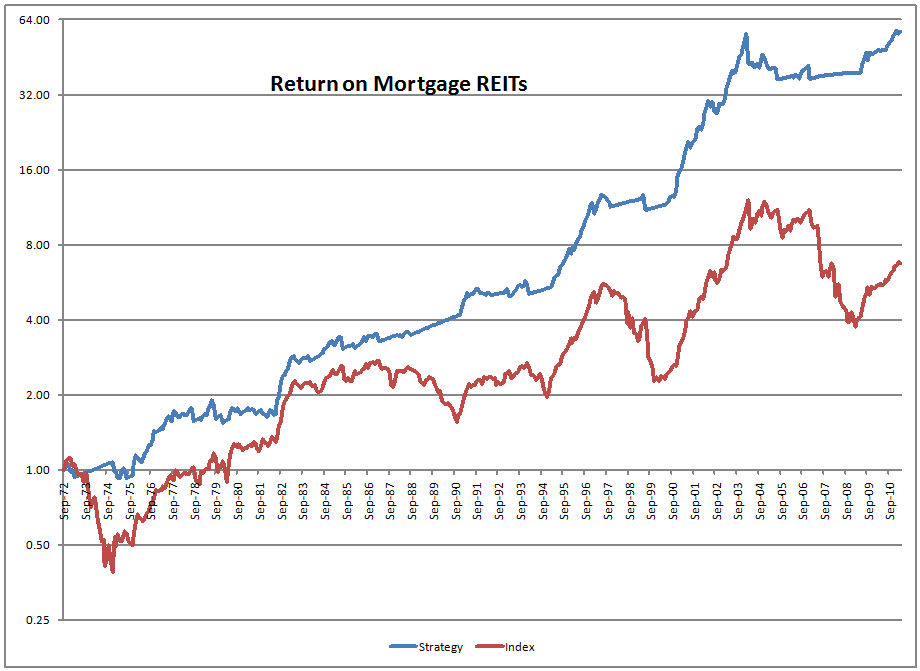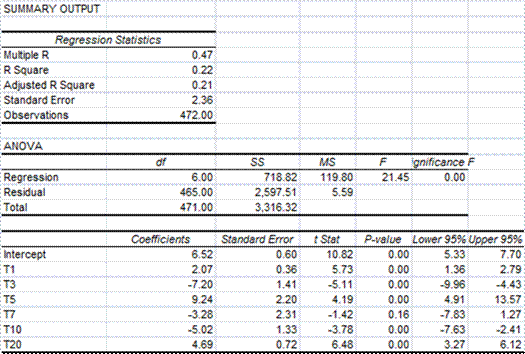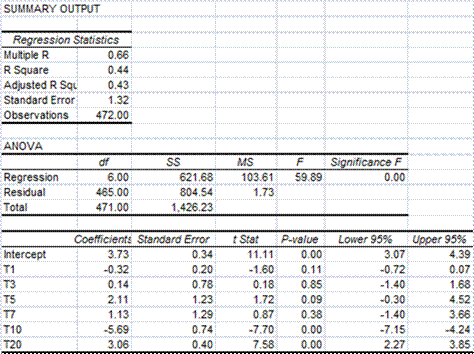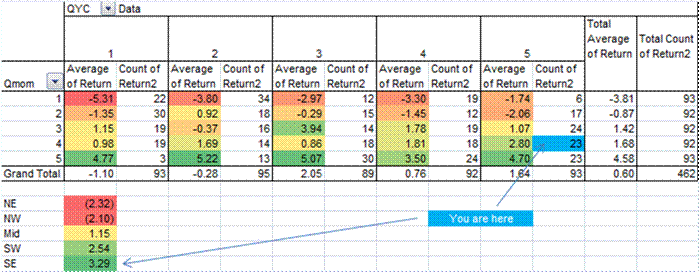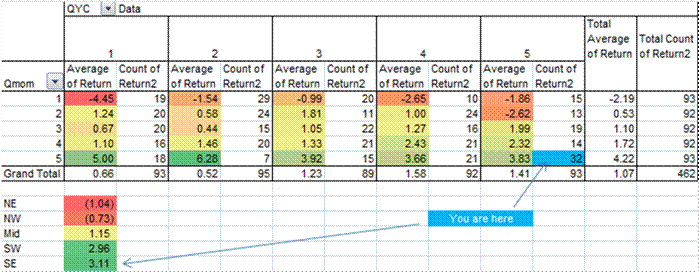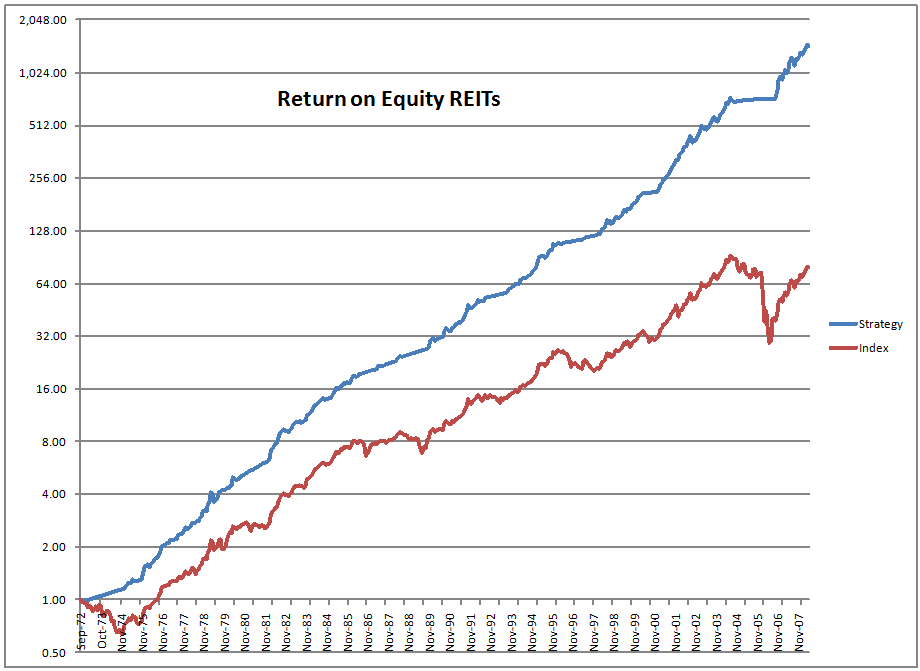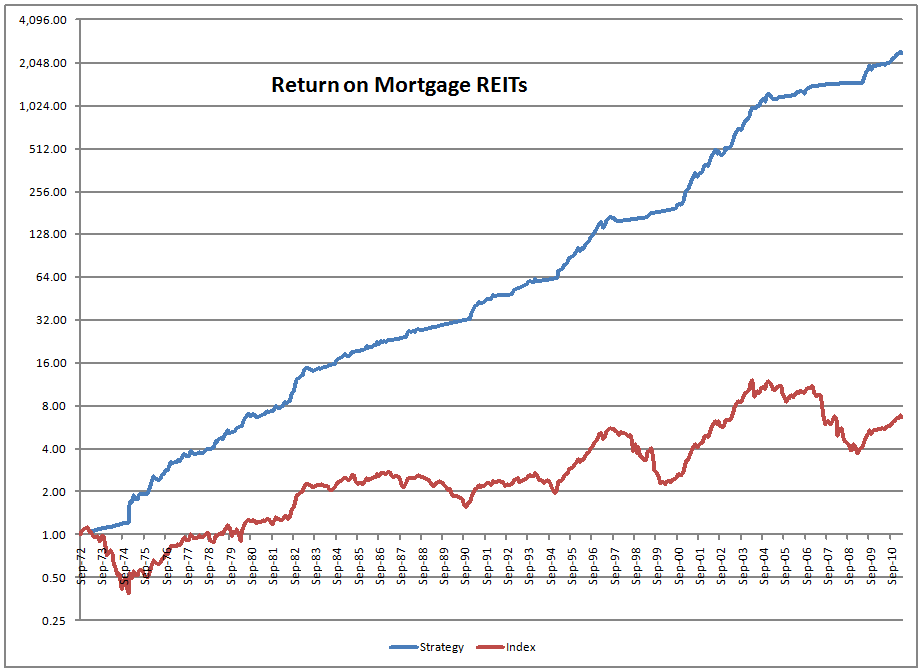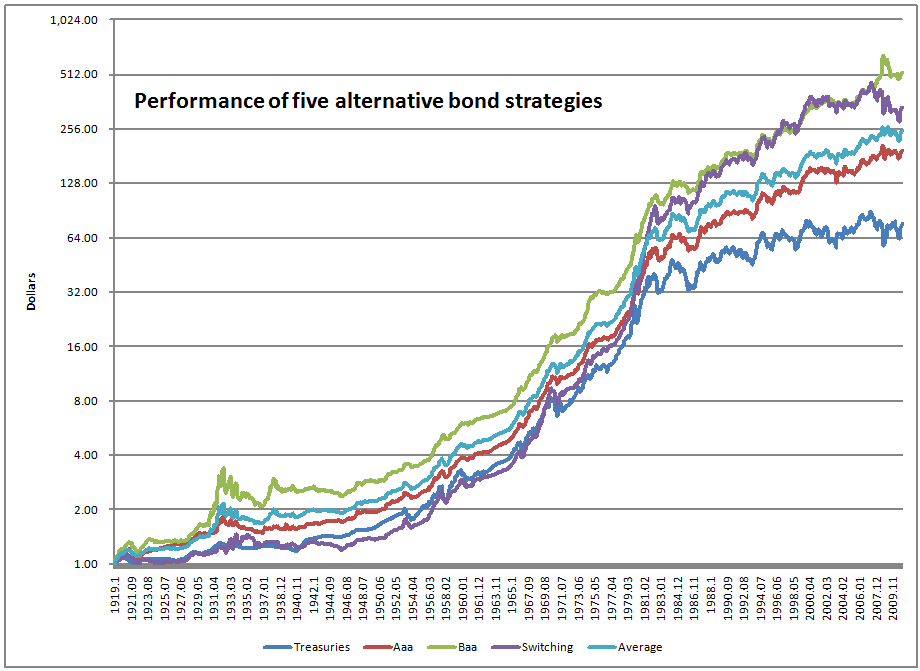In this post, I want to talk about enhancing fixed income returns.? Next week, I will talk about hedging, or Tactical Asset Allocation.
My views on managing fixed income (bonds) are quirky.? I don?t look to maximize yield, as many do, but my view is to preserve the purchasing power of capital, which might lead to underperformance in the short-run.? There are times to grab yield, and times not to do so, and preserve capital.? Typically, the times to grab for yield are the times one would be scared to death to do so, like November 2008 and March 2009.
But to do that means being willing to take risk when everything seems to be dying.? Before I explain more, here is my stylized view of how the investment cycle works for equities and corporate bonds.? Gains and losses are not purely random, they tend to streak.? Here?s my stylized view of how an equity/credit cycle works:
- After a washout, valuations are low and momentum is lousy.? People/Institutions are scared to death of equities and any instruments with credit exposure.? Only rebalancers and deep value players are buying here.? There might even be some sales from leveraged players forced by regulators, margin desks, or ?Risk control? desks.? Liquidity is at a premium.
- But eventually momentum flattens, and yield spreads for the survivors begin to tighten.? Equities may have rallied some, but the move is widely disbelieved.? This is usually a good time to buy; even if you do get faked out, and momentum takes another leg down, valuation levels are pretty good, so the net isn?t far below you.
- Slowly, but persistently the equity market rallies.? Momentum is strong.? The credit markets are quicker, with spreads tightening to normal-ish levels.? Bit-by-bit valuations rise until the markets are fairly valued.
- Momentum remains strong.? Credit spreads are tight. Valuations are high, and most value-type players have reduced their exposures.? Liquidity is cheap, and only rebalancers are selling. ?(This is where we are now.)
- The market continues to rise, but before the peak, momentum flattens, and the market meanders.? Credit spreads remain tight, but are edgy, and maybe a little volatile.? This is usually a good time to sell.? Remember, tops are often a process.
- Cash flow proves insufficient to cover the debt at some institution or set of institutions, and defaults ensue.? Some think that the problem is an isolated one, but search begins for where there is additional weakness.? Credit spreads widen, momentum is lousy, and valuations fall to normal-ish levels.
- The true size of the crisis is revealed, defaults mount, valuations are low, credit spreads are high.? A few institutions and investors fail who you wouldn?t have expected.? Momentum is lousy.? We are back to part 1 of the cycle.? Remember, bottoms are often an event.
You could call part 4 of my stylized cycle ?borrowed time.? But it is borrowed time that can last a long time.? At the end of the bull cycle, the equity market catches up to the credit market, creating a situation where the valuation of the equity can no longer be sustained by further increases in leverage (part 5 leading to part 6).
Now, value investors typically play the game from part 1 to part 4.? This is what drives the idea that value investors are always early.? Focusing solely on valuation, they arrive too soon, and leave too soon.
In 1994, I was part of a team that hired a clever small cap value manager to help manage money for our multiple manager funds.? The firm?s name was Moody, Aldrich & Sullivan; they were based in Boston.? One partner, Avery Aldrich, was their quantitative analyst, and he had a chart that I had never seen before: a two-dimensional grid for buy/hold/sell using valuation and momentum.? He said that it solved the problem of being early.? Using my seven parts, MA&S would take on the most exposure to risk in parts 2-5, when the most reward was received.
Applying this to Bonds
Here is the challenge: investment performance is a product of two main factors:
- Valuation, a long run factor, and
- Momentum, a short run factor.
These two factors interact with each other.? If momentum is positive, rising prices will make valuations rise, which lowers long-term return potential.? If momentum is negative, falling prices will make valuations fall, which raises long-term return potential.
In general, momentum changes more than valuation.? That?s to be expected.? When J.P. Morgan was asked by someone what the market would do that day, Morgan reportedly replied, ?It will fluctuate, young man. It will fluctuate.?
There are numerous articles, books, and posts that show that momentum tends to persist in the intermediate-term.? Here is one example from a study that I did, A Different Look at Industry Momentum ? II (and part one).? Mean-reversion can play a role over a 4-year period or so, but that seems to be a weaker effect.? Now momentum is not infallible, because when a lot of people follow it, the market goes nuts (1998-2000 for example) and then you get a wipeout.
But typically at times like that, valuations are high, so someone with an eye on valuation could avoid the wipeout as momentum flattens.
Now, with bonds, I have a model for valuation, but it is not simple.? I can analyze the relative risks of loss among different bond asset classes and compare that against spreads, and allocate to those that offer the best relative return.? I this environment, it means principal preservation is preferred to stretching for yield.
But what would a momentum model say?? I have a little more than 90 years of data on three yield series, the Aaa and Baa series on long corporate bonds from Moody?s, and Shiller?s long (usually 10-year) Treasury series.
Using a method that borrows from work done by Mebane Faber, I look at a ten month moving average of yields for each series, and invest in the one that has current yield lowest versus the moving average.? As yields fall, prices rise, and the bond subclass that has done best for the last ten months is likely to do better than most in the next month.
So, consider five strategies:
1.????? Invest and reinvest only in Treasuries.
2.????? Invest and reinvest only in Aaa corporate bonds.
3.????? Invest and reinvest only in Baa corporate bonds.
4.????? Invest in the one that has the yield the most below, or least above its 10-month moving average.
5.????? Invest and reinvest 36% in Treasuries, 19% in Aaa corporate, and 45% in Baa corporates.
Here are the results of those strategies over the last 91+ years:
|
Treasuries |
Aaa |
Baa |
Switching |
Weighted Average |
| Annualized Return |
4.86% |
5.94% |
7.10% |
6.58% |
6.23% |
| Standard Deviation |
9.02% |
6.62% |
8.12% |
8.37% |
6.04% |

Now for a confession: when I first ran the analysis, the switching strategy had a return that was 1.5%/yr higher than what it shows now.? One simple math error did that.? Thus, I don?t have a worldbeater to trot out to you. At a later point I will revisit this, after thought, and not data abuse.
That said, the switching strategy isn?t bad, and seems to work well in high volatility environments.? But let me explain.
Buying and holding Baa corporate bonds (BBB for those speaking the language of S&P or Fitch) has always been the high returning option for corporate bonds.? After that comes Aaa, Aa, A, Ba, B, Caa.? For more on this look at Eric Falkenstein?s book Finding Alpha.? It is similar to what we know about the equity markets.? Those who take moderate risks do best.? After that, those who take little risk, then no risk, then a lot of risk.
You would think that Baa/BBB corporate bonds would be an asset of choice, but for most bond managers who have to compete against a broad benchmark, it would be too big of a bet to use them indiscriminately.? Some life insurers use them more aggressively, but it would be rare to go above 30%.
Now, relative to the standard deviation of returns the weighted average portfolio did well.? It mimics a AA- portfolio, which is pretty high quality.? The percentages came from the switching strategy.? Those percentages came from how often was the switching portfolio in Treasuries, Aaa, or Baa securities.
Lessons
Now, I only made one pass through the data.? I am not torturing the data to make it confess.? There might be better ways to do things.? But observing the momentum improves matters.? It is not as good as investing in Baa bonds, but who would run such a strategy?? If one is beating the Aaa bonds, it is good.
Another lesson is that investing for the average investment grade credit quality is good also.? The average mix is roughly Aa3/A1 (AA-/A+).? That would be similar to the main bond averages.
Lesson three is the pursing yield is rewarded, within limits.? If a society survives, and general order prevails, credit risk is generally rewarded.? It can?t be otherwise, aside from revolutions.
Lesson four is that switching yields better than its average, but the volatility is higher.? It kept up with Baa bonds for some time, but missed in the last cycle.? Had this analysis be run three years ago, the endorsement would have been strong for the switching strategy.? And that endorsement might be strong 10 years from now, because the strategy did well during periods of high volatility.
Caveats
1) Transaction costs would cut the fees of the switching strategy, but if ETFs and closed-end funds are used the effect can be minimized.
2) It?s easy to find Treasury funds, but hard to find Aaa and Baa corporate funds.? Most investment grade corporate funds are a blend of everything from Aaa to Baa.? This strategy as written will prove hard to implement.
But, maybe a variation might not prove so hard.? I plan on testing the difference between the current yield and the 10-month (or 200-day) moving average on a variety of ETFs, and seeing if it has any usefulness.
But the work for next week is writing up a trading model for stock indexes, and I have something more substantial to say there.


